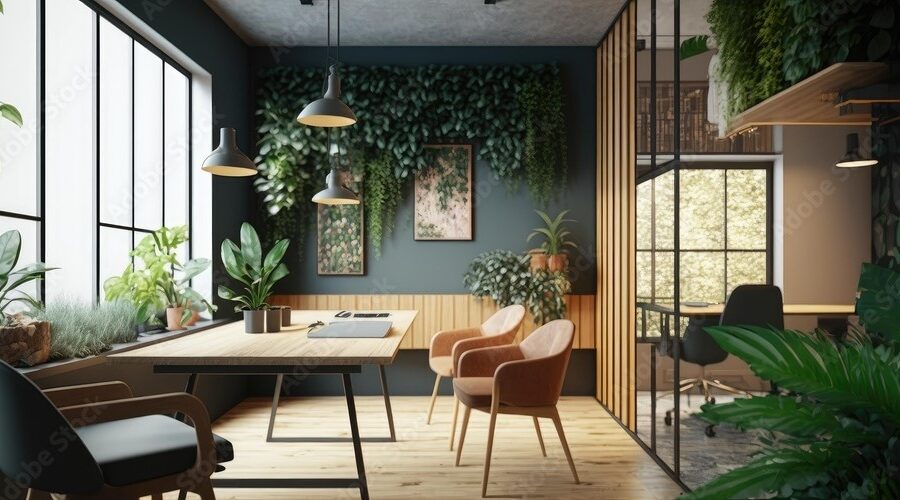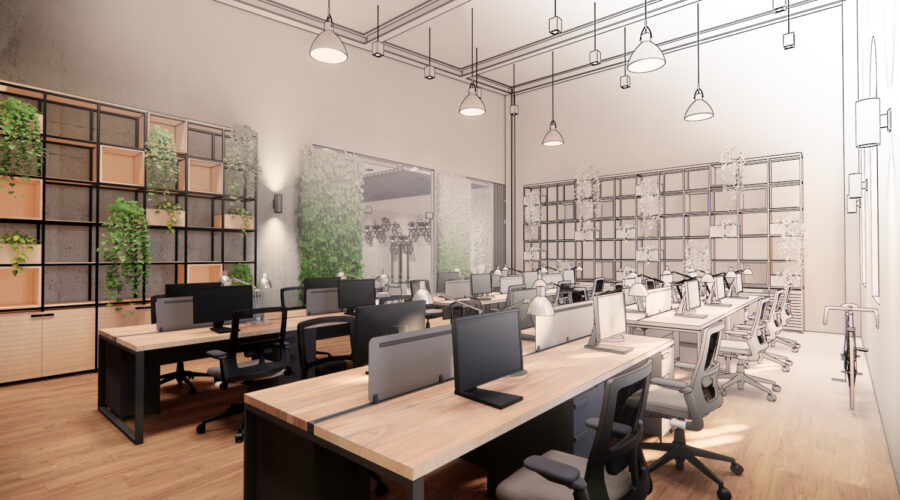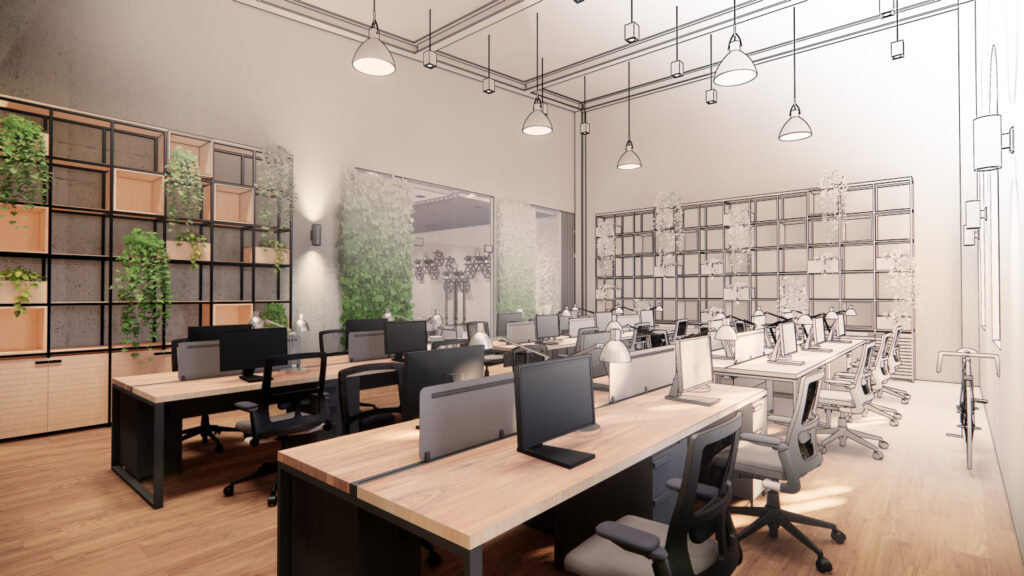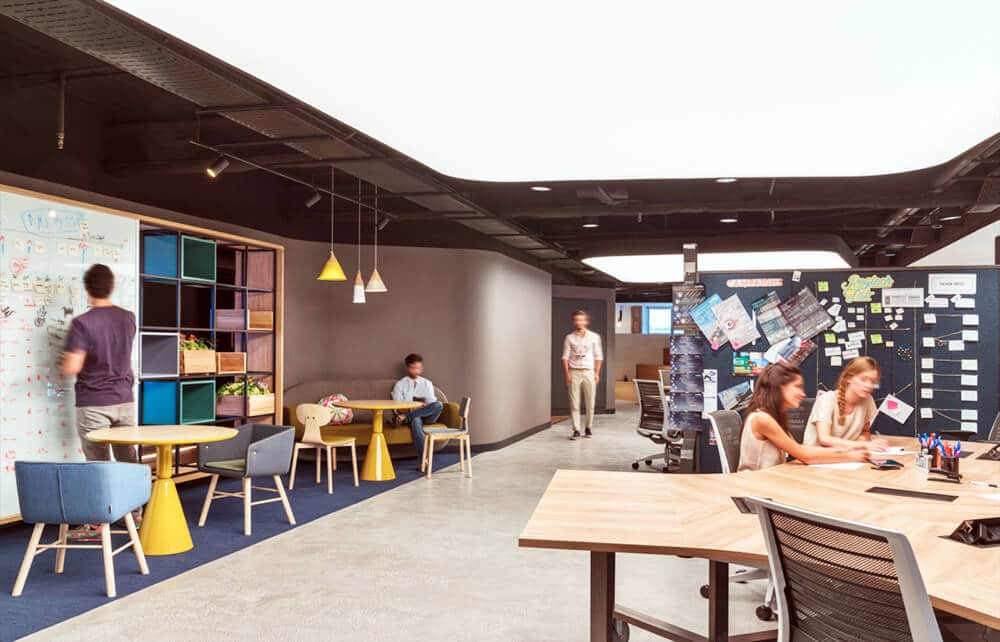Office Interior Design Ideas
Designing an office can be an experience that releases your creativity. A new style elevates how the environment feels for staff and clients that come in the doors. First impressions are everything. With numerous styles, deciding on one look that appeals to the eye can be a big decision. To help make your design decision, here are some growing 2024 trends.
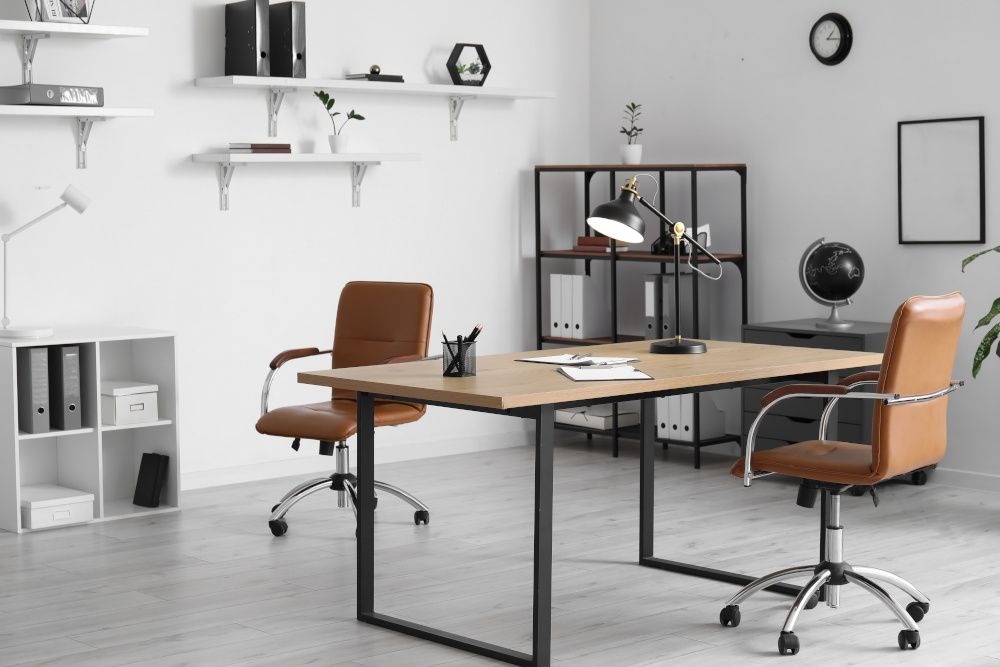
First, a Few Tips:
- Before diving into the biggest trends and what’s “popular,” your office should inspire you. These elements should be included to make the space enjoyable and unique.
- Functional Floor Plan: Make the most of the layout. Even if there is no open floor plan, optimize the space for easy movement and room for different things.
- Comfort and Practicality: Invest in stylish, comfortable furniture. A cozy chair to grind out a task and a relaxing couch to take a break promotes well-being.
- Lighting: This simple part of the office is crucial for various reasons. Lighting can impact productivity and mood. Poor lighting can cause eye strain and fatigue and decrease employees’ concentration and satisfaction. Natural and artificial lighting can be used to reduce stress and enhance mood.
- Brand Identity: Design the office that feels authentic to your brand. This can include color scheme, décor, and anything else that reflects your brand’s aesthetic.
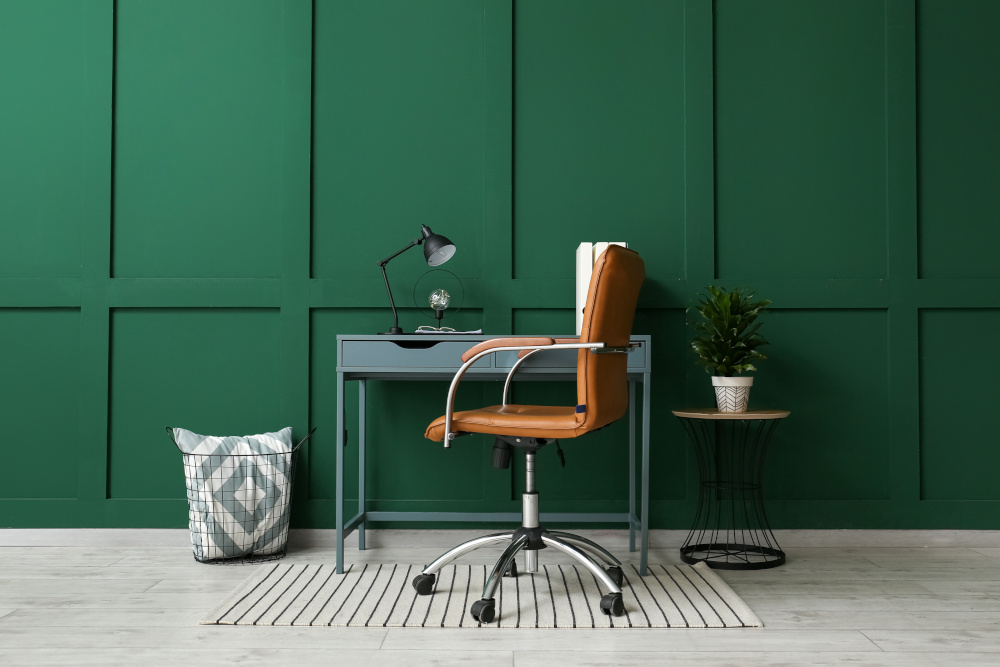
Design Inspiration:
- Industrial chic
This style offers a moody design, a color pallet of cool tones, such as blacks, charcoals, and grays, and a touch of earthy warm tones of rust, copper, and weathered wood for character. To bring this style to life, exposed brick walls, concrete floors, reclaimed natural wood and metal accents add to the industrial charm. To make the look complete, you want furniture that combines vintage metal and wood materials, keeping comfort in mind.
- Modern Minimalism
A modern look is always a solid interior design choice, where you can add authentic details that accompany your brand. Opt for neutral white, beige, gray, and black colors to dominate the space. Your accent colors should fit into the brand’s theme; if you’re unsure, try out a calming deep blue, emerald, or light shades of green or any color that suits your taste to add visual interest without overwhelming the room. Have sleek and clean materials: polished concrete or marble tables, glass, metal, and smooth Scandinavian wood to tie in the modern minimalist design. Incorporate simple furniture with geometric shapes and clean lines to complement the contemporary style.
- Bohemian Eclectic
A unique take on interior design, bohemian eclectic will turn eyes with the mix of vibrant colors, patterns, and textures. Bring in the rich and colorful palette of jewel tones like deep purple, red, turquoise, and earthy tones of sage green, terracotta, and ochre to get the bohemian look. A bohemian style requires natural materials such as rattan and bamboo. To add some flare and texture, include patterned rugs and embroidered fabrics. Selecting vintage furniture with intricate details and soft colors adds to the theme. Comfort is also essential, incorporating poufs, pillows, and a low-slung couch.
- Elegant Contemporary
An elegant contemporary is a sophisticated take on design for a classic yet luxurious feel. The color pallets feature cream, charcoal, and taupe with accented jewel hues. Materials such as velvet, brass, polished wood, and marble bring out the elegance. Furniture that is elegant and refined with high-quality finishes or has upholstery covers to protect and provide comfort made of fabric or leather material.
Interior design does not have to conform to a particular style or theme if that’s not true for your company. These design ideas provide inspiration and guidance to find a style that works and feels raw. Don’t be afraid to experiment and go through trial and error to achieve an office space that is not only aesthetically pleasing but adaptable to the work environment’s constant changes.

